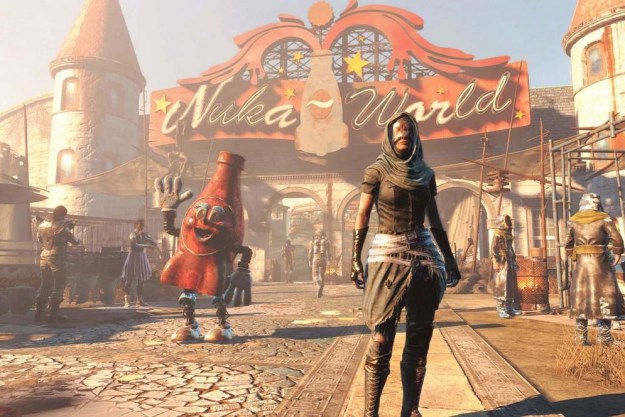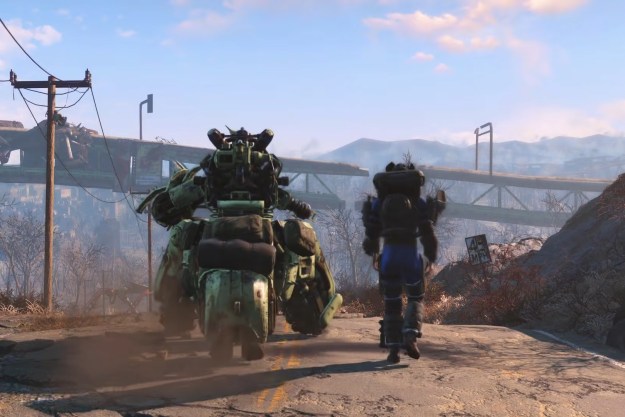
Forty years ago today, video games went mainstream.
- Pac-Man was designed as a social equalizer
- There was pressure to make the ghosts indistinguishable
- No one has a clue how much money the franchise has made
- Pac-Man has a hidden meaning
- There’s one feature Iwatani never got to implement
- Pac-Man is the video game industry’s biggest multimedia star
- Pac-Man debuted in the aftermath of tragedy
Sure, Pong and Space Invaders were already huge, but when Pac-Man hit the scene, it was something completely different. The yellow dude with the insatiable appetite for power pellets is turning 40, having racked up everything from sales records to a breakfast cereal. And there is no gaming icon who is more recognizable — or who has done more to bring gaming to the front of the collective cultural mind.
But even the most well-known icons have their secrets. Here are seven things you might not have known about Pac-Man.
Pac-Man was designed as a social equalizer
When Pac-Man made his debut on May 22, 1980, video games were largely considered a boy’s club. Creator Toru Iwatani, in a panel presentation at GDC 2011, said he wanted to create a game to change that.
“The reason I created Pac-Man was because we wanted to attract female gamers,” he says. “People had to go to the arcade center to play games. That was a playground for boys. It was dirty and smelly. So, we wanted to include female players, so it would become cleaner and brighter.”
There was pressure to make the ghosts indistinguishable
While the iconic bright colors of each ghost are part of the Pac-Man legacy today, Namco president Masaya Nakamura was not a fan of that design decision. In fact, he ordered Iwatani to make them all red, thinking players might believe them to be Pac-Man’s allies.
Iwatani thought that was silly, so he refused. Instead, he put a question before game testers, asking if they preferred one ghost color or four. The answer was unanimous: Four. Namco’s president backed down.
No one has a clue how much money the franchise has made
Pinning down exactly how much cash Pac-Man has generated isn’t a simple matter. The billions of dollars the game raised during its arcade heyday are impossible to definitively calculate, which isn’t surprising, given it was an all-cash business with lots of third-parties involved. And the character has appeared in so many different games and been merchandized in so many different ways (remember Pac-Man: The Breakfast Cereal?) that it’s an accounting nightmare.
The billions of dollars the game raised during its arcade heyday are impossible to definitively calculate.
In the late 1990s, though, Twin Galaxies, an organization that tracks video game records, visited several used game auctions and counted how many times the average Pac Man machine had been played. Multiplying those figures by the total number of machines that were manufactured, the organization believes the arcade game was played more than 10 billion times in the 20th century. That’s $2.5 billion in quarters alone.
Pac-Man has a hidden meaning
Pac-Man’s raison d’être is chomping dots. And Iwatani says food was central to the design of the character. As he thought about how to design a game that would attract female players, he thought about how much his wife loved to eat dessert. That verb — eat — began the thought process that led to the game.

The original name for Pac-Man in Japan was Puck-Man. Midway Games, which distributed the title in the U.S., changed it to Pac-Man so vandals wouldn’t cut out part of the P to create something that didn’t fit in a family-friendly arcade. The name Puck came from the Japanese expression “puck puck” which loosely translates to “munch munch.”
So, technically, Pac-Man means “Munch Man.”
There’s one feature Iwatani never got to implement
The 1980s were an era of explosive creativity in the video game industry, but the technology was not especially advanced. That worked in Pac-Man’s favor, as it kept the game basic enough that it was instantly accessible to new players. But Iwatani says there was one gameplay mechanic he wanted that he had to leave out.
“I wanted to have a shelter and it would move up and down,” he says. “When the ghost comes, the ghost would be pinched by the shelter which would disfigure the ghost.”
Pac-Man is the video game industry’s biggest multimedia star
While he got his start in the arcades in the 1980s, Pac-Man has expanded his resume to include pretty much every other medium.
He has had his own line of trading cards, graced lunch boxes and board games, and been on the cover of Time Magazine. He was the inspiration for a Top 40 hit (Buckner & Garcia’s “Pac Man Fever” hit number nine on Billboard’s charts in 1982). He’s been in an Adam Sandler film as well as at least two television cartoons.
There were plenty of sequels. Ms. Pac-Man is the best known (and, ironically, is considered a better game than the original), but there have been plenty of others, including Pac-Man Plus, Jr. Pac-Man and Pac-Man: Adventures in Time. There were a pair of Pac-Man pinball machines. And even Nintendo’s Shigeru Miyamoto helped make a Pac-Man game, Pac-Man Vs. in 2003.
And, of course, the original game has appeared on virtually every gaming platform to have ever been released.
Pac-Man debuted in the aftermath of tragedy
Pac-Man’s timing really couldn’t have been much better. Its debut, on May 22, came just four days after Mount St. Helens spewed volcanic ash and steam into the sky in southwestern Washington state.
Other notable events that occurred the same year he appeared on the pop culture scene included the Miracle on Ice victory of the U.S. hockey team over the Russians in the Winter Olympics, the debut of Post-it notes, and the release of Bruce Springsteen’s iconic double album The River.
Editors' Recommendations
- A Redditor ‘didn’t know’ about the Steam Deck, so they built their own
- 5 useful Nintendo Switch features you didn’t know about




